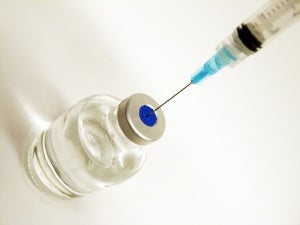
British scientists have developed a way to create an entirely synthetic vaccine, eliminating the need to rely on dangerous live infectious viruses, making the process much safer.
Developing a vaccine against a viral threat is usually extremely hazardous because pathogens could escape and spread infection, meaning strict precautions have to be put in place.
However, because the vaccine is synthetic it is unable to initiate disease, therefore there is no possibility of accidental release.
Currently, available vaccines are made from live viruses so have an inherent risk of accidental release.
Scientist from Oxford and Reading Universities, the Pirbright Institute and the Diamond Light Source, the UK’s national synchrotron facility, collaborated on making the synthetic vaccine for foot and mouth disease, which is endemic in some countries.
The vaccine is made up of tiny protein shells designed to trigger an optimum immune response.
How well do you really know your competitors?
Access the most comprehensive Company Profiles on the market, powered by GlobalData. Save hours of research. Gain competitive edge.

Thank you!
Your download email will arrive shortly
Not ready to buy yet? Download a free sample
We are confident about the unique quality of our Company Profiles. However, we want you to make the most beneficial decision for your business, so we offer a free sample that you can download by submitting the below form
By GlobalDataUniversity of Reading School of Biological Sciences researcher Professor Ian Jones said; “The shells have been altered to make them more stable and non-susceptible to the impact of warmer temperatures. The methodology used has succeeded in making this type of vaccine more efficient and reproducible for the first time.”
It is also easier to store than current vaccines, reducing the need for cold chain logistics.
Significantly, this new approach to vaccines could impact on how viruses from the same family are fought, including polio.
“This work will have a broad and enduring impact on vaccine development, and the technology should be transferable to other viruses from the same family, such as poliovirus and hand foot and mouth disease, a human virus which is currently endemic in south-east Asia,” said Professor David Stuart, professor of structural biology at the University of Oxford and life science director at Diamond Light Source.
Because the vaccine is less susceptible to storage conditions it could be stockpiled and used in rural communities more easily.
“As such it could offer a substantial benefit to animal health as far as control of FMDV is concerned,” added Jones.
A foot and mouth epidemic in the UK in 2001 cost the economy billions of pounds in control measures and compensation.
Over 10m sheep and cattle were also killed.
The vaccine is not yet available on the marketplace and Nigel Gibbens, the UK’s Chief Veterinary Officer, has said that the vaccine requires years more work before it will be available for market use. He added that it is “undoubtedly an exciting leap forward”.
Image: The vaccine is less susceptible to storage conditions, so could be stockpiled and used in rural communities more easily. Photo: Courtesy of Brian Hoskins.



